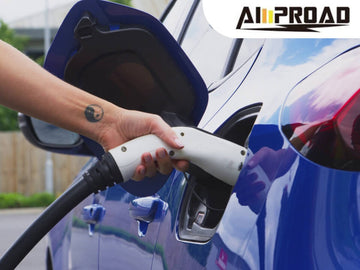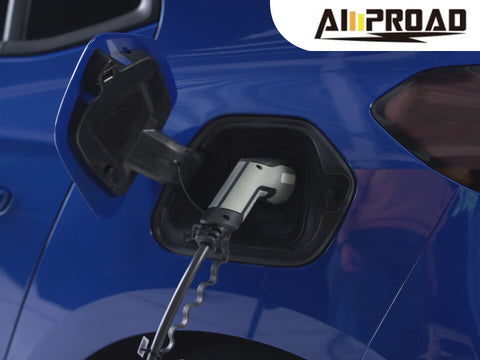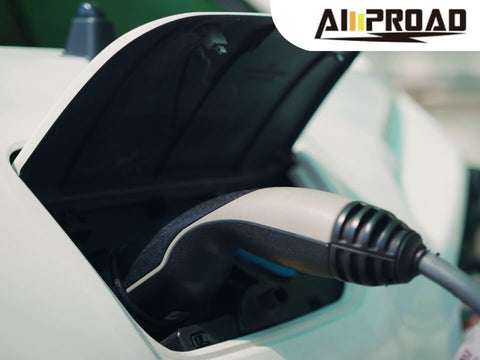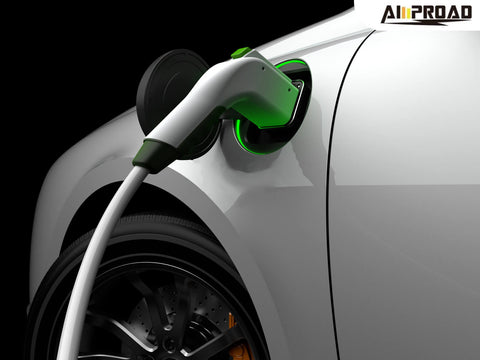
Are you considering an electric vehicle (EV) but feeling uncertain about charging? You're not alone. Navigating the world of EV charging can seem daunting, but fear not! We're here to demystify the process and offer clear guidance.
First things first: understanding the different types of chargers is key. From Level 1 chargers for home use to DC fast chargers for quick top-ups on the road, each has its perks and considerations. But how do you choose the right one? We'll walk you through the selection process, whether you're outfitting your garage or seeking out public stations.
Once you've got your charger sorted, it's time to dive into best practices. From optimizing your home charging setup to etiquette at public stations, we've got you covered. Plus, we'll share tips on extending your battery's lifespan and harnessing renewable energy for guilt-free charging
Ready to plug in? Let's get started on your journey to hassle-free EV charging!
What are the different types of EV chargers available?
When it comes to charging your electric vehicle (EV), understanding the various charger types is essential for a smooth charging experience. Let's break it down:
What are the differences between Level 1, Level 2 EV chargers, and DC fast chargers?
|
Level 1 Chargers |
Level 2 Chargers |
DC Fast Chargers |
|
- Uses standard household outlet (120 volts). |
- Operates at 240 volts. |
- Delivers high-power charging. |
|
- Slowest charging option, suitable for overnight charging at home. |
- Offers faster charging than Level 1. |
- Significantly reduces charging times compared to Level 1 and Level 2 chargers. |
|
- Convenient for EV owners with limited charging needs or access to higher-level chargers. |
- Commonly found in residential settings, workplaces, and public charging stations. |
- Typically found along highways, major routes, and in urban areas. |
|
- Ideal for EV owners with limited charging needs or access to higher-level chargers. |
- Ideal for daily charging needs, providing a full charge in a matter of hours. |
- Perfect for long-distance travel or quick top-ups on the go. |
How does the charging speed vary between these types?
Charging speed depends on factors such as the charger type, the vehicle's onboard charger capacity, and battery size. Level 1 chargers offer the slowest charging speeds, while DC fast chargers provide the fastest. Level 2 chargers fall in between, offering moderate charging speeds suitable for daily use.
Are there specific recommendations for each type of charger?
For daily charging at home or work, consider installing a Level 2 charger to meet your regular charging needs efficiently.
When embarking on long trips, plan your route to include stops at locations with DC fast chargers for quick recharges to minimize travel time.
Understanding the differences between these charger types empowers you to make informed decisions about your EV charging setup and ensures you're equipped for any charging scenario.
How should one select an appropriate charging station?
Choosing the right charging station, whether for home or public use, is crucial for ensuring seamless charging experiences for your electric vehicle (EV). Let's explore the key considerations:
What factors should be considered when choosing a charging station for home or public use?
- Location: For home charging, consider the available space and proximity to your EV parking spot. For public charging, accessibility and convenience of the location are important.
- Charging Speed: Assess your charging needs. Level 1 chargers are suitable for overnight charging at home, while Level 2 EV charger offers faster charging and are ideal for daily use. DC fast chargers provide rapid charging for long-distance travel or quick top-ups on the go.
- Cost: Evaluate the upfront cost of the charging station, installation fees (if applicable), and any ongoing subscription or usage fees for public charging stations.
- Compatibility: Ensure compatibility between your EV model and the charging station. While most EVs can use standard Level 1 and Level 2 chargers, some may require adapters for specific charging stations.
Are there compatibility issues between EV models and charging stations?
Some EV charging stations, such as Tesla Destination Chargers, are designed specifically for Tesla vehicles. While Tesla vehicles can use other charging stations with adapters, Tesla Destination Charger offers seamless compatibility and faster charging for Tesla owner.
What features should one look for in a charging station to ensure safety and efficiency?
- Safety Certifications: Look for charging stations that meet safety standards and certifications to protect your EV and property from electrical hazards.
- Smart Features: Consider charging stations with smart capabilities, such as scheduling, remote monitoring, and energy management, for enhanced convenience and efficiency.
- Durability: Choose charging stations made from high-quality materials and designed to withstand outdoor conditions for long-term reliability.
By considering these factors and features, you can select the right charging station to meet your specific needs and ensure hassle-free charging experiences for your electric vehicle.
What are the best practices for charging an EV at home?
Charging your electric vehicle (EV) at home is convenient and cost-effective, but it's essential to follow best practices to ensure safety and efficiency. Let's explore:
What kind of electrical outlet is suitable for home charging?
- Dedicated Outlet: Install a dedicated 240-volt outlet, commonly known as a NEMA 14-50 outlet, for Level 2 charging at home. This outlet provides faster charging compared to standard household outlets.
- AMPROAD Level 2 Portable EV Charger: Consider using the AMPROAD Level 2 portable EV charger, which offers flexibility for both home and travel charging. Its compact design and compatibility with standard outlets using a 14-50r adapter make it convenient for EV owners.
How can one optimize charging time and cost at home?
- Time-of-Use (TOU) Plans: Take advantage of time-of-use electricity plans offered by utility providers. These plans offer lower electricity rates during off-peak hours, allowing you to charge your EV at a lower cost.
- Scheduled Charging: Use the scheduling feature available in many EVs and charging stations to program charging during off-peak hours, further reducing charging costs and minimizing strain on the electrical grid.
Are there any safety precautions to take when charging at home?
- Proper Installation: Ensure that your home charging station is installed by a qualified electrician to meet safety standards and prevent electrical hazards.
- Regular Inspections: Periodically inspect your charging equipment for any signs of damage or wear. Replace damaged cables or connectors immediately to avoid potential safety risks.
- Fire Safety: Install smoke detectors in your garage or charging area and have a fire extinguisher readily available. Follow manufacturer guidelines for safe charging practices to reduce the risk of fire.
By following these best practices, you can maximize the convenience and benefits of charging your EV at home while ensuring safety and efficiency.
What should one know about charging an EV at public charging stations?
Charging your electric vehicle (EV) at public charging stations provides flexibility and convenience, especially when you're on the go. Here's what you need to know:
How does the process differ from charging at home?
- Availability: Public charging stations are located in various places such as shopping centers, parking lots, and along highways, providing accessibility for EV owners away from home.
- Charging Speed: While some public charging stations offer Level 2 charging similar to home chargers, others may provide faster DC fast charging options for quicker top-ups.
- Payment: Public charging stations may require payment for use, either through a subscription service, pay-per-use model, or mobile payment apps. Some stations offer free charging, but it's essential to check the terms and conditions.
What apps or resources can help locate public charging stations?
- EV Charging Networks: Utilize EV charging network apps or websites such as PlugShare, ChargePoint, or Electrify America to locate nearby public charging stations. These platforms provide real-time information on station availability, charging speeds, and pricing.
- In-Vehicle Navigation: Many EVs come equipped with built-in navigation systems that display nearby charging stations and route you to your desired destination while factoring in charging stops.
- Mobile Apps: Download dedicated mobile apps provided by charging network operators to access station locations, initiate charging sessions, and manage payments directly from your smartphone.
Are there any etiquette guidelines for using public charging stations?
- Parking Courtesy: Once your EV is fully charged, promptly move your vehicle to free up the charging space for other EV owners who may be waiting.
- Charging Time Limits: Be mindful of any posted time limits at public charging stations and avoid leaving your vehicle parked at a charging spot longer than necessary after it's fully charged.
- Cable Management: When not in use, neatly stow charging cables to prevent tripping hazards and ensure accessibility for other EV owners.
- Respect Other Users: Treat public charging stations with respect and follow any posted rules or guidelines to maintain a positive charging experience for all users.
By familiarizing yourself with these aspects of charging at public stations, you can make the most of your EV ownership experience while contributing to the smooth operation of public charging infrastructure.
How does EV charging infrastructure contribute to the widespread adoption of electric vehicles?

The growth of electric vehicles (EVs) relies heavily on the development of robust charging infrastructure. Let's explore how EV charging infrastructure contributes to the widespread adoption of electric vehicles:
What initiatives are being undertaken to expand the charging network?
- Government Funding: Governments around the world are investing in EV charging infrastructure through grants, subsidies, and tax incentives to encourage the expansion of charging networks.
- Public-Private Partnerships: Collaboration between government agencies, electric utilities, charging network operators, and other stakeholders facilitates the deployment of charging infrastructure in strategic locations.
- Utility Programs: Electric utilities are implementing programs to incentivize EV adoption and support charging infrastructure deployment. These programs may include discounted electricity rates for EV charging and rebates for installing home charging stations.
- Charging Network Expansion: Private companies are investing in the expansion of charging networks, deploying charging stations in high-traffic areas such as shopping centers, workplaces, and along major highways.
How does the availability of charging infrastructure impact consumer confidence in EVs?
- Range Confidence: A widespread charging infrastructure network alleviates range anxiety by providing EV owners with convenient access to charging facilities, enabling longer trips with confidence.
- Convenience: The availability of charging infrastructure at various locations enhances the convenience of owning an EV, making it easier for consumers to integrate electric vehicles into their daily lives.
- Perception of Reliability: A well-developed charging infrastructure network enhances the perceived reliability of EVs, reassuring consumers that they can charge their vehicles conveniently and reliably whenever needed.
- Market Growth: Increased consumer confidence in the availability of charging infrastructure stimulates market demand for electric vehicles, driving further investment in EV technology and infrastructure development.
What are the challenges and opportunities in developing EV charging infrastructure?
- Infrastructure Costs: The high upfront costs associated with installing charging infrastructure, particularly DC fast chargers, pose a significant barrier to widespread deployment.
- Regulatory Hurdles: Regulatory barriers, such as permitting processes and zoning restrictions, can delay the deployment of charging infrastructure and increase project costs.
- Grid Capacity: Integrating large numbers of EVs into the grid requires upgrades to existing infrastructure to accommodate increased electricity demand, presenting both challenges and opportunities for grid modernization.
- Business Models: Developing sustainable business models for charging infrastructure operators is essential to ensure the long-term viability and profitability of charging networks.
- Technology Advancements: Advances in EV charging technology, such as faster charging speeds and vehicle-to-grid capabilities, present opportunities to enhance the efficiency and effectiveness of charging infrastructure.
By addressing these challenges and seizing opportunities for innovation and collaboration, stakeholders can accelerate the development of EV charging infrastructure and facilitate the widespread adoption of electric vehicles, contributing to a cleaner, more sustainable transportation future.






